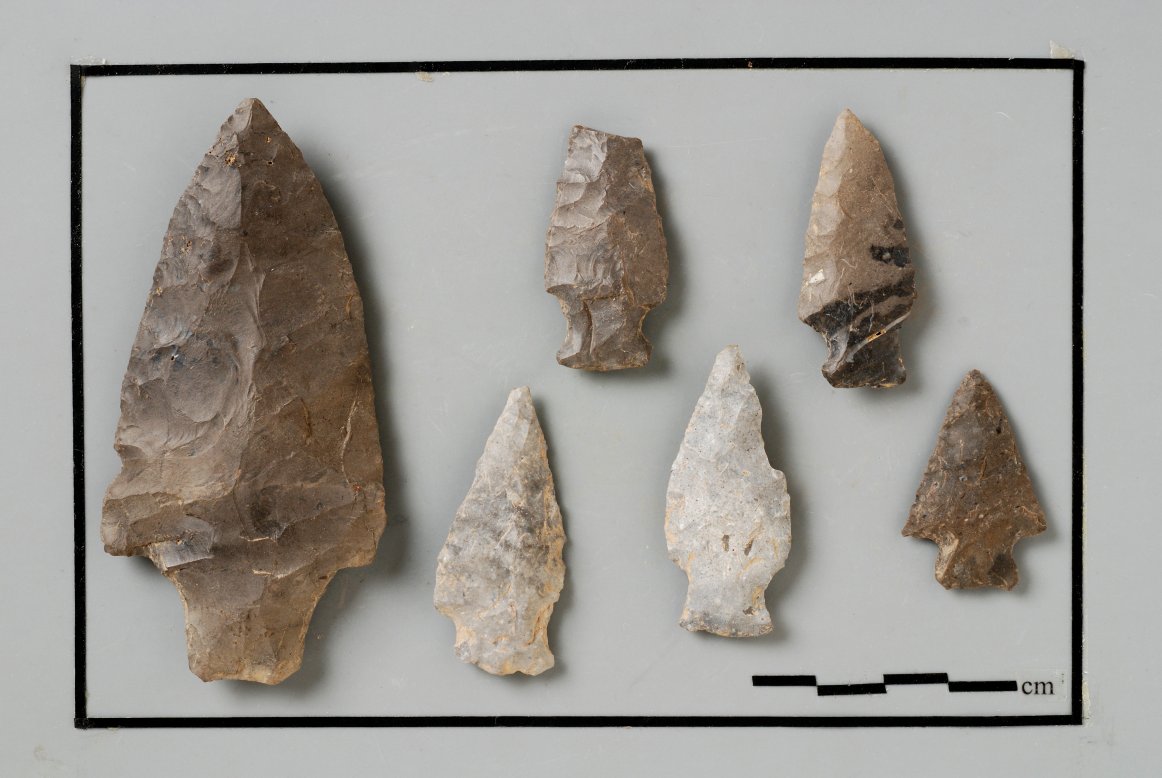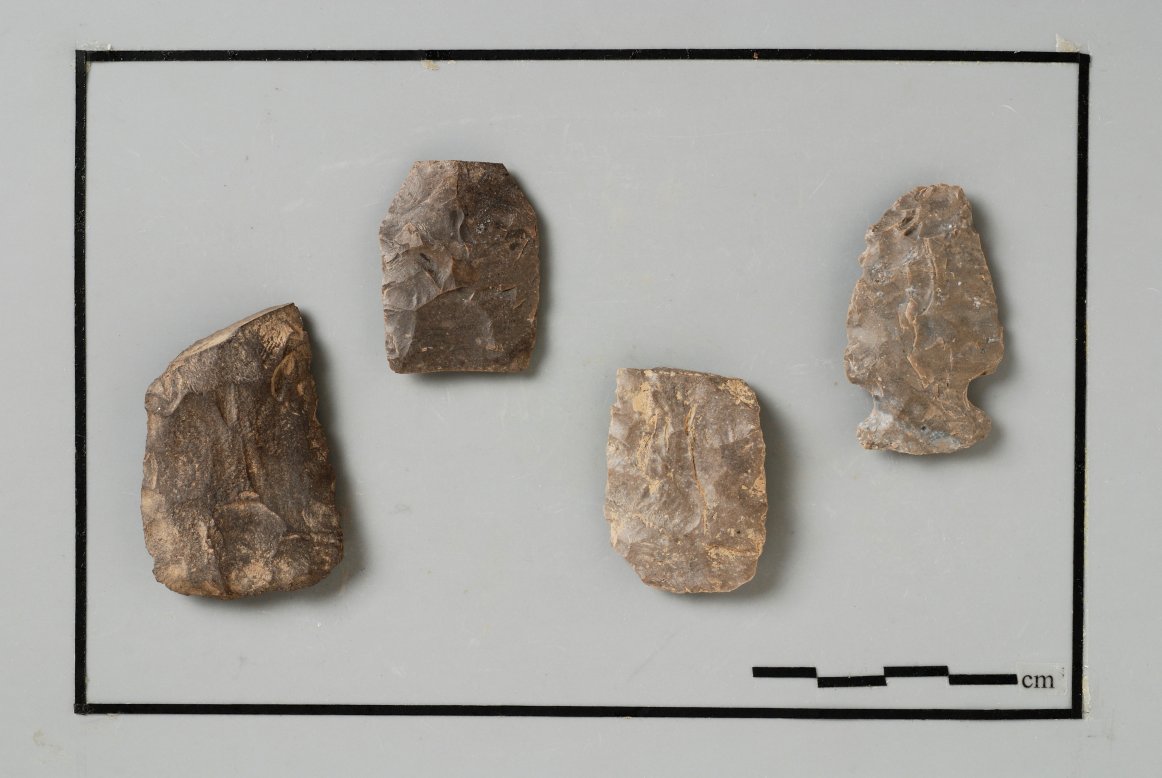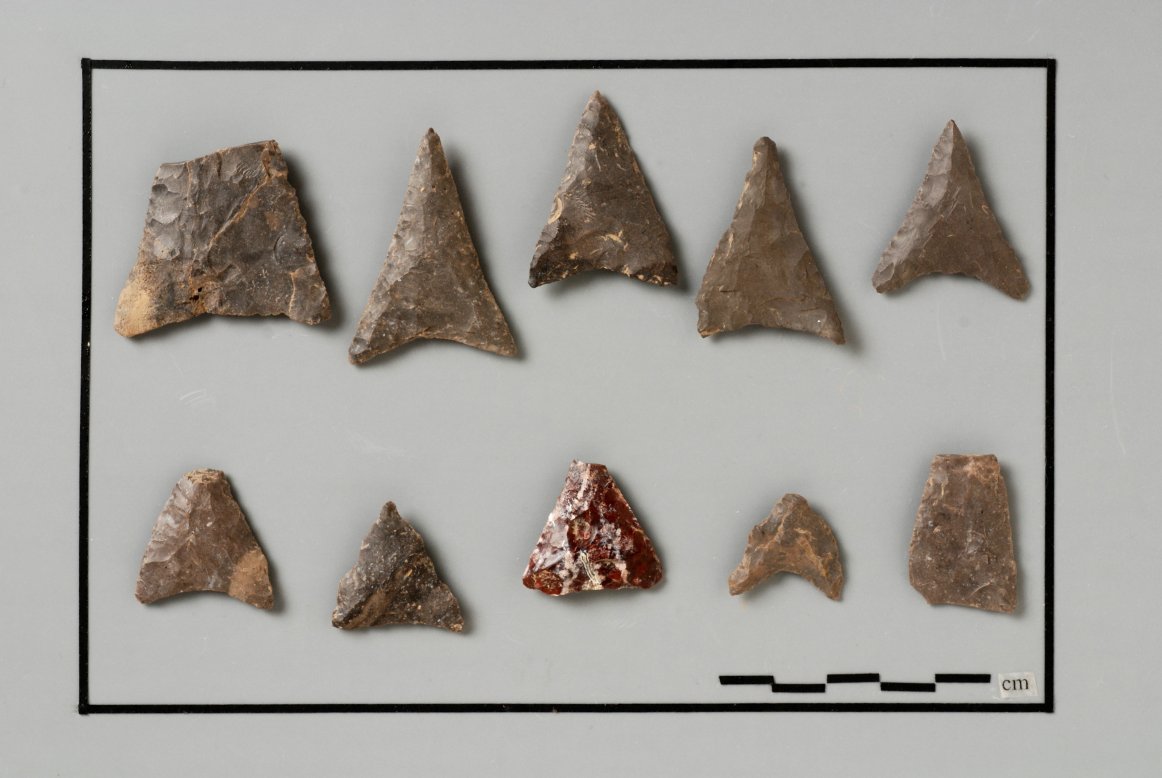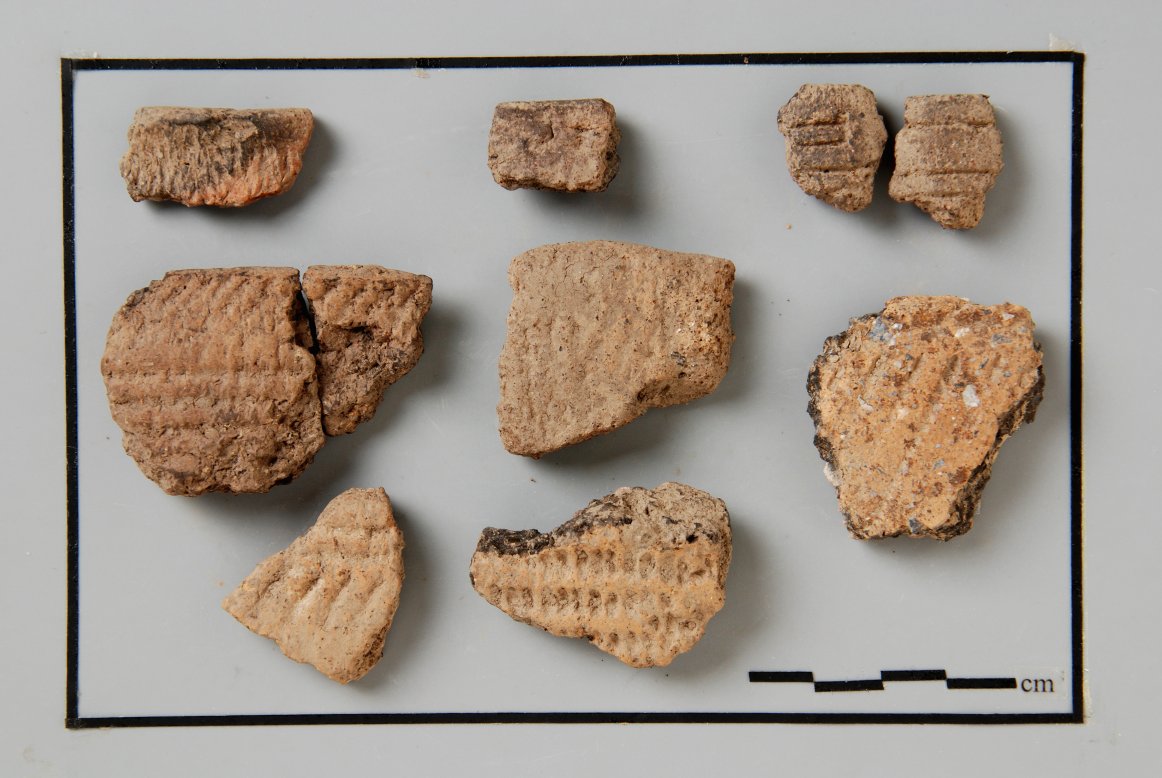Central to the data recovery investigations for the Canadarago Lake I site was addressing various issues related to site chronology. Specifically, there were three key research questions: 1) are there two distinct Transitional occupations at the site, based on the broad blade concave base projectile points recovered during the 2009 excavation?, 2) is there a late Middle Woodland to Late Woodland transition at the site?, and 3) what was the extent of Late Archaic occupation? Addressing site chronology involved a combination of data. Diagnostic material culture, chronometric dating (accelerator mass spectrometry [AMS]), and site stratigraphy (vertical and horizontal) provided the main lines of evidence to date the periods during which groups used this portion of Canadarago Lake’s shores.
Diagnostic Material Culture
Archaeologists recovered 48 projectile points from the 2009 site examination and the 2014 data recovery excavations. Of these, 41 (85.4%) were sufficiently diagnostic to be assigned a temporal affiliation. The Canadarago Lake I assemblage includes points from the Late Archaic, Transitional, Early Woodland, Middle Woodland, and Late Woodland periods. The types of points present suggest that this lake terrace was utilized by Indigenous people, as least intermittingly, for over four millennia. Pottery sherds from a minimum of six distinct vessels were also recovered during the site examination and data recovery investigations. Although the presence of any pottery is diagnostic of the Woodland period in general (ca. 700 BC- AD 1550), five (83.3%) of the Canadarago Lake I site pottery vessels could be assigned to a narrower temporal period (late Middle Woodland or early Late Woodland).

Canadarago Lake I Late Archaic period projectile points.

Canadarago Lake I Transitional period projectile points.

Canadarago Lake I Early/Middle Woodland period projectile points.

Canadarago Lake I Late Woodland period projectile points.

Canadarago Lake I precontact pottery.
Chronometric Dating
PAF archaeologists secured seven radiometric assays for the Canadarago Lake I site: six on carbonized nutshell and one on wood charcoal. All were submitted to Beta Analytic, Inc. for accelerator mass spectrometry (AMS) assays. The Canadarago Lake I dates fall into three temporal periods. The earliest period has a single member, Feature 13, with an AMS date of 3750 ± 30 BP and a calibrated two sigma range of 2280-2245, 2230-2130, and 2085-2045 BC, falling within the Late Archaic period. The second group also contains a single member, Feature 17. The calibrated two sigma range of 1010-890 BC and 875 to 845 BC falls within the Early Woodland period. The remaining four dates from Features 1, 11, 14, and 15 fall within the Late Woodland period. Dates from Features 1, 11, and 15 are statistically the same and, when averaged, have a two sigma range of AD 1039-1168.
Site Stratigraphy
PAF archaeologists identified two A horizons soil layers with cultural material (A1 and A2), one above the other. A well-defined early Late Woodland occupation, based on AMS dates and diagnostic material culture, is associated with the A1 horizon. The A2 horizon contains projectile points dating to the Late Archaic, Transitional, and Early Woodland periods and associated Late Archaic and Early Woodland radiometric dates. Since the points and the cultural features from the Late Archaic, Transitional, and Early Woodland periods cannot be separated out stratigraphically (or vertically), analysis of the A2 horizon was conducted based on the horizontal distribution of the points and the radiometric dates across the site.